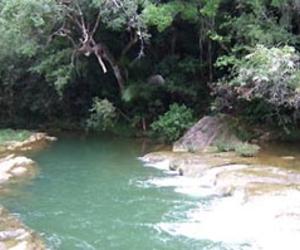Attractive Ecotourism Options in Cuban Peninsula
- Submitted by: manso
- Travel and Tourism
- 07 / 20 / 2011

Walks on crags, caverns and tropical rainforests with high biodiversity are now attractive ecotourism options in the Cuban peninsula of Guanahacabibes, a Biosphere Reserve.
On the way to Las Pelas Cave, the visitors can see a forest with over 200 year-old trees and a great variety of birds like Tocororo (Cuban Trogon), Cartacuba (Cuban Tody) and Thrush, Director of the National Park located in the area Lazaro Marquez told Prensa Latina.
At the end of the walk, Cueva las Perlas (Pearls Cave) offers a beautiful sight of stone structures with wide galleries bathed in natural light and an interior lake.
In the caves, there are traces of native communities who used to inhabit the area thousands of years ago.
Other ecotourism proposals include walks from the forest to the sea, including beautiful ladscapes full of palm trees, ferns and other plants.
The bird warbling accompanies the travellers as they enjoy the peculiar shapes and lively colors of orchids in a privileged environment.
Finally Poza Redonda (Round Pool), a submerged cavern, surprises latecomers.
The tour of Cabo de San Antonio, an important bird corridor, is another favourite offer for local and foreign tourists.
From May to September, tourists can go to the beach at night to see the arrival of sea turtles that nest in the peninsula under the twinkles of the Roncali beacon, in the westernmost tip of the Cuban archipelago.
More than 193,000 foreign tourists have visited Pinar del Rio province, 124.5 miles west of Havana, this year, many of them interested in touring the Vinales Valley, a Cultural Landscape of Mankind, and also the marine scenes of Guanahacabibes.
Source: PL
Comments